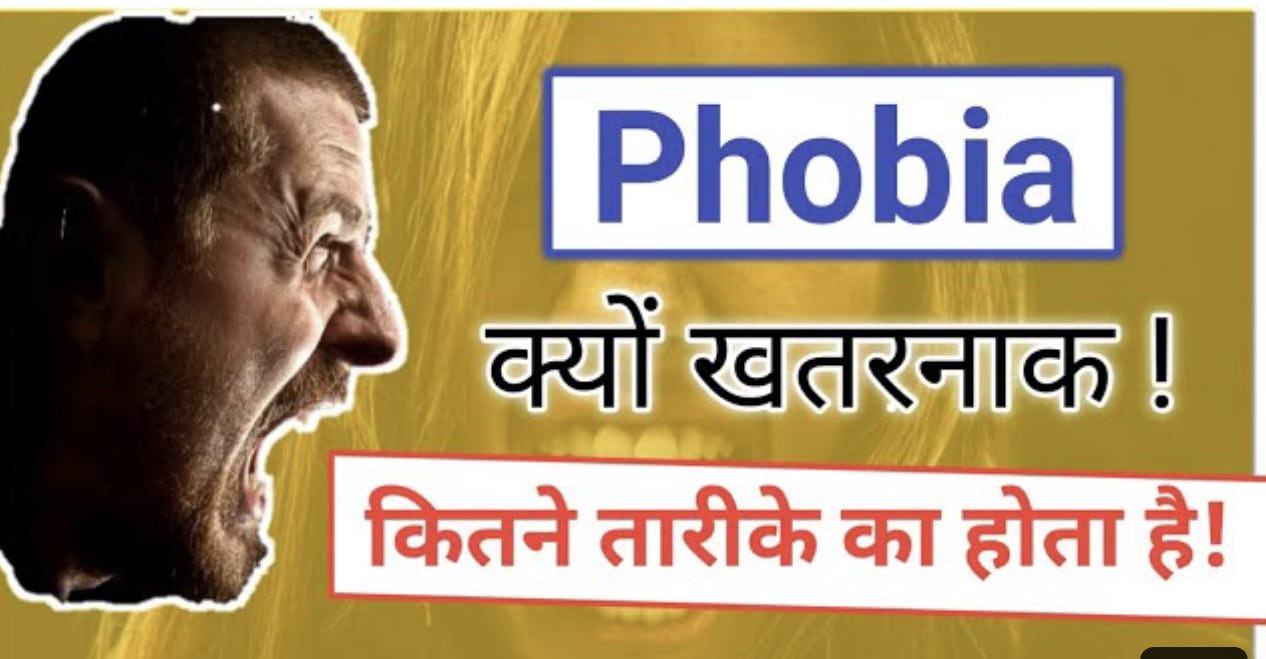What is Phobias ?
What is Phobias? – Phobia is an utmost or irrational fear of a specific thing, situation or any activity.
It is a type of anxiety disorder characterized by persistent and intense fear that is disproportionate to the actual threat posed by the feared object or situation.
categories of Phobias
Phobias will be classified into below categories:
Specific Phobias:
These involve a fear of a specific object, animal, place or situation.
Some examples like fear of height , fear of spiders , fear of flying and fear of enclosed spaces (claustrophobia).
Social Phobia:
Also known as social anxiety disorder this involves an intense fear of social situations and the fear of being embarrassed, humiliated or judged by others.
People with social phobia may have a fear of public speaking, eating in front of others or interacting with strangers.
Agoraphobia:
This is a fear of being in situations where escape is very difficult or help might not be available in case of a panic attack or other intolerable symptoms.
People with agoraphobia often avoid crowded places like public transportation or situations where they feel trapped or unable to leave.
Phobias can cause significant distress and interfere with daily life leading individuals to limit their activities and experiences.
Treatment options for phobias include therapy, such as cognitive-behavioral therapy (CBT), exposure therapy, and medication in some cases.
What are the types of phobias?
Phobias can be classified into several types based on the specific object, situation or activity that triggers the fear.
- Specific Phobias: These involve a fear of a specific object, situation, or activity. Some examples include:
- Animal Phobias: Fear of specific animals like spiders (arachnophobia), snakes (ophidiophobia), dogs (cynophobia), or birds (ornithophobia).
- Natural Environment Phobias: Fear of specific natural environments like heights (acrophobia), water (hydrophobia), storms (astraphobia), or darkness (nyctophobia).
- Situational Phobias: Fear of specific situations like flying (aviophobia), driving (vehophobia), enclosed spaces (claustrophobia), or crowded places (agoraphobia).
- Medical Phobias: Fear of medical procedures, needles (trypanophobia), blood (hemophobia), or dentistry (dentophobia).
- Social Phobia: Also known as social anxiety disorder, this involves an intense fear of social situations and the fear of being embarrassed, humiliated, or judged by others. Examples include fear of public speaking, fear of performing in front of others, or fear of social interactions.
- Agoraphobia: This is a fear of being in situations where escape might be difficult or help might not be available in case of a panic attack or other uncomfortable symptoms. People with agoraphobia often avoid crowded places, public transportation, or situations where they feel trapped or unable to leave.
- Blood-Injection-Injury Phobia: This phobia involves an extreme fear of blood, injections, or injury. It can cause physical reactions like fainting, dizziness, or a drop in blood pressure.
It is important to note that phobias can vary greatly among individuals and there can be numerous specific phobias beyond the examples.
Each person may have their unique fear triggers and experiences.
Phobia Treatment
Phobia treatment typically involves a combination of therapies and, in some cases, medication.
The goal of treatment is to reduce the intensity of the fear response and help individuals regain control over their lives. Here are some common approaches to treating phobias:
Cognitive-Behavioral Therapy (CBT):
CBT is a widely use and effective treatment for phobias.
It involves identifying and challenging negative thoughts and beliefs associated with the phobia and replacing them with more realistic and balanced thoughts. CBT also includes exposure therapy
where individuals gradually and safely confront their fears in a controlled manner.
Through repeated exposure, anxiety levels decrease and individuals learn that their feared object or situation is not as threatening as they believed.
Systematic Desensitization:
This is a type of exposure therapy that involves gradually exposing individuals to their feared object or situation while teaching them relaxation techniques to manage anxiety.
The exposure is done in a step-by-step manner starting with situations that provoke mild anxiety and gradually progressing to more challenging ones.
Virtual Reality Exposure Therapy (VRET):
Virtual reality technology is sometimes use to create realistic simulations of the phobic stimuli.
This allows individuals to face their fears in a controlled and safe environment.
VRET can be particularly useful for specific phobias such as fear of flying or fear of heights.
Medication:
In some cases, medication may be advice to help manage the symptoms of phobias.
Antidepressants or anti-anxiety medications can used on a short-term basis to alleviate anxiety symptoms. Medication is typically use in conjunction with therapy.
Support Groups:
Joining support groups or participating in group therapy sessions with others who have similar phobias can provide a sense of community and understanding.
Sharing experiences and learning from others can be helpful in managing phobias.
It is important to consult with a mental health professional to determine the most appropriate treatment approach for your specific phobia.
They can provide a personalized treatment plan based on your needs and circumstances.
